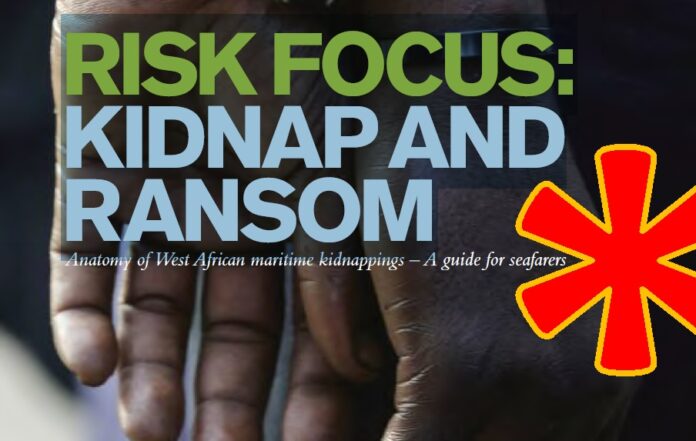
This report from UK P&I club, explains why kidnapping for ransom has increased recently in the Gulf of Guinea, and assesses whether this increase will continue. It describes what happens during a kidnap, and provides some insight into the training available for shipping companies and crews.
The Gulf of Guinea is currently thought to be the most dangerous region for seafarers. According to a recent report by Oceans Beyond Piracy, the total number of kidnaps for ransom during 2016 in the Gulf of Guinea has already surpassed the total number of incidents recorded by the International Maritime Bureau (IMB) for 2015.
The IMB itself has recorded 10 incidents in the Gulf of Guinea in the first quarter of 2016, and the kidnap of 16 seafarers. Since April 2015, the Merchant Trade Information Sharing Centre for the Gulf of Guinea (MTISC-GoG) recorded 56 incidents in the area and the kidnap of 35 seafarers. The increase in kidnapping for ransom has not occurred out of the blue: in 2014, 16% of attacks in the area involved kidnap for ransom; in 2015 it was 28% of attacks.
The costs of protecting vessels in the region are well known. The attacks on vessels and the kidnapping of seafarers in this region, however, have a further impact on business. Owners and crewing agencies may find it increasingly hard to crew ships in these waters, especially with nationalities that have the appropriate experience, languages and skills set.
Click on below image to download full report.
 Source: UK P&I club
Source: UK P&I club
















Reblogged this on Brittius.
Reblogged this on Mar Equinoccial and commented:
Risk Focus: KIDNAP and RANSOM
K&R in the Gulf of Guinea has a pattern of violence against seafarers not only in the theft of personal belongings but also in the act of kidnap. Most captors tend to be fuelled by drugs and almost trigger happy, so the risks are high. Pre deployment training for seafarers combined with accurate intelligence briefings go some way to preparing to operate in these waters. Supporting crew during deployment and debriefing crew on return helps to assist them dealing with operating in such waters. Failing to do so exposes companies to litigation through Duty of Care obligations by crew should something happen.